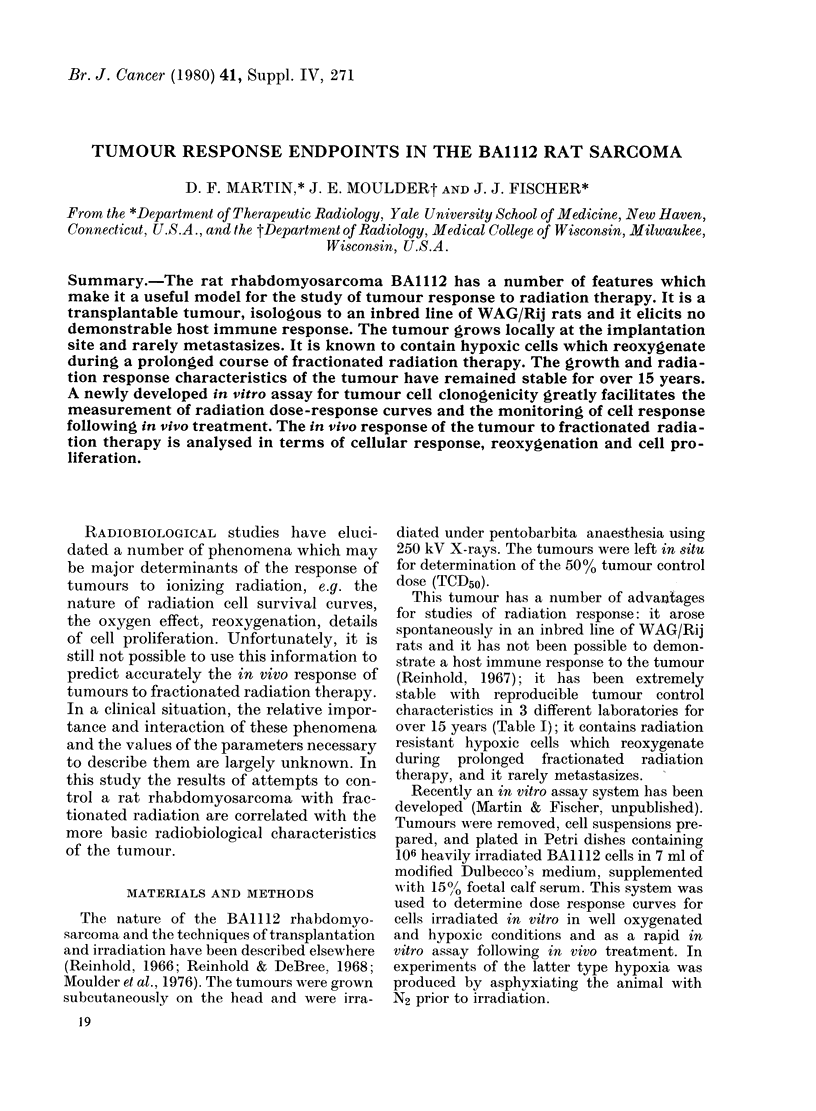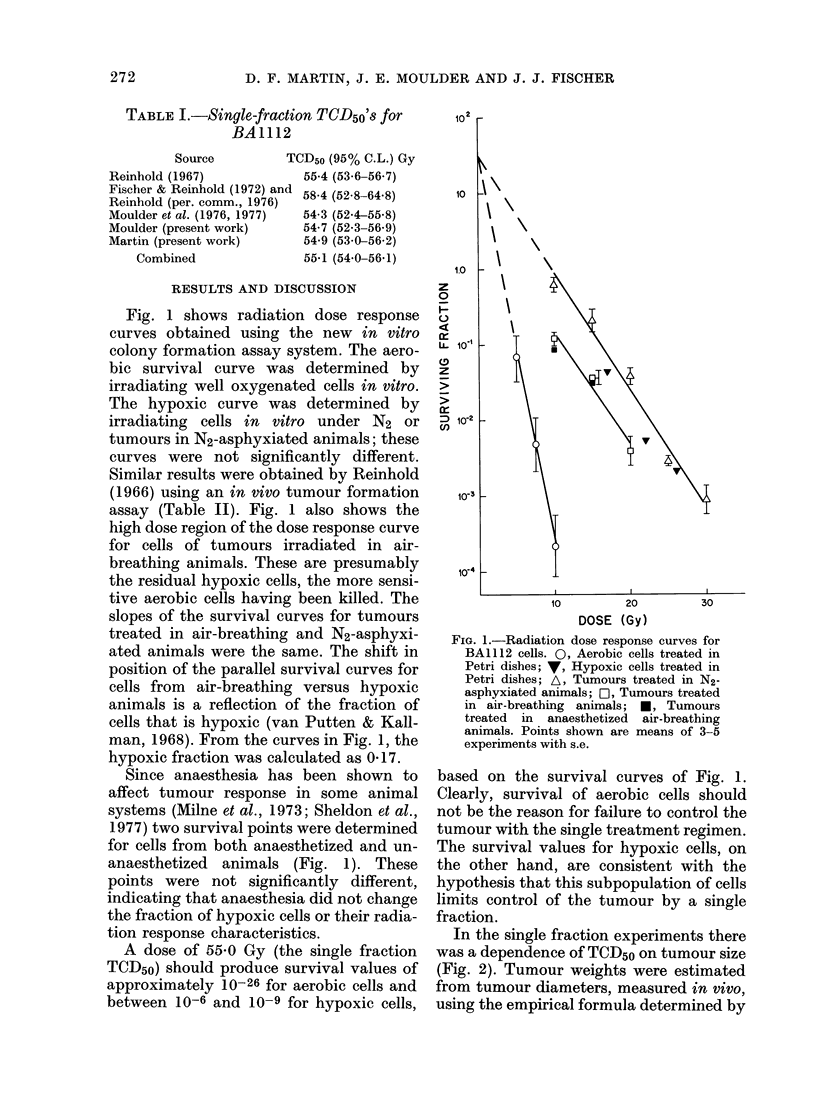Abstract
The rat rhabdomyosarcoma BA1112 has a number of features which make it a useful model for the study of tumour response to radiation therapy. It is a transplantable tumour, isologous to an inbred line of WAG/Rij rats and it elicits no demonstrable host immune response. The tumour grows locally at the implantation site and rarely metastasizes. It is known to contain hypoxic cells which reoxygenate during a prolonged course of fractionated radiation therapy. The growth and radiation response characteristics of the tumour have remained stable for over 15 years. A newly developed in vitro assay for tumour cell clonogenicity greatly facilitates the measurement of radiation dose-response curves and the monitoring of cell response following in vivo treatment. The in vivo response of the tumour to fractionated radiation therapy is analysed in terms of cellular response, reoxygenation and cell proliferation.
Full text
PDF



Selected References
These references are in PubMed. This may not be the complete list of references from this article.
- Fischer J. J., Moulder J. E. The steepness of the dose-response curve in radiation therapy. Theoretical considerations and experimental results. Radiology. 1975 Oct;117(1):179–184. doi: 10.1148/117.1.179. [DOI] [PubMed] [Google Scholar]
- Fischer J. J., Reinhold H. S. The cure of rhabdomyosarcoma BA 1112 with fractionated radiotherapy. Radiology. 1972 Nov;105(2):429–433. doi: 10.1148/105.2.429. [DOI] [PubMed] [Google Scholar]
- Howes A. E. An estimation of changes in the proportions and absolute numbers of hypoxic cells after irradiation of transplanted C3H mousemammary tumours. Br J Radiol. 1969 Jun;42(498):441–447. doi: 10.1259/0007-1285-42-498-441. [DOI] [PubMed] [Google Scholar]
- Milne N., Hill R. P., Bush R. S. Factors affecting hypoxic KHT tumor cells in mice breathing O2, O2 + CO2 , or hyperbaric oxygen with or without anesthesia. Radiology. 1973 Mar;106(3):663–671. doi: 10.1148/106.3.663. [DOI] [PubMed] [Google Scholar]
- Moulder J. E., Fischer J. J., Milardo R. Time-dose relationships for the cure of an experimental rat tumor with fractionated radiation. Int J Radiat Oncol Biol Phys. 1976 Mar-Apr;1(5-6):431–438. doi: 10.1016/0360-3016(76)90008-0. [DOI] [PubMed] [Google Scholar]
- Moulder J. E., Lo P. S., Fischer J. J. Effect of combined metronidazole and DMSO on tumour control and skin tolerance in the rat. Br J Cancer Suppl. 1978 Jun;3:216–219. [PMC free article] [PubMed] [Google Scholar]
- Moulder J. E., Lo P. S., Fischer J. J. Effect of the radioprotective drugs MEA, DMSO, and WR-2721 on tumor control and skin tolerance in the rat. Cancer Treat Rep. 1977 Aug;61(5):825–833. [PubMed] [Google Scholar]
- Reinhold H. S., De Bree C. Tumour cure rate and cell survival of a transplantable rat rhabdomyosarcoma following x-irradiation. Eur J Cancer. 1968 Aug;4(4):367–374. doi: 10.1016/0014-2964(68)90026-1. [DOI] [PubMed] [Google Scholar]
- Reinhold H. S. Quantitative evaluation of the radiosensitivity of cells of a transplantable rhabdomyosarcoma in the rat. Eur J Cancer. 1966 Feb;2(1):33–42. doi: 10.1016/0014-2964(66)90087-9. [DOI] [PubMed] [Google Scholar]
- Sheldon P. W., Hill S. A., Moulder J. E. Radioprotection by pentobarbitone sodium of a murine tumour in vivo. Int J Radiat Biol Relat Stud Phys Chem Med. 1977 Dec;32(6):571–575. doi: 10.1080/09553007714551351. [DOI] [PubMed] [Google Scholar]
- Van Putten L. M., Kallman R. F. Oxygenation status of a transplantable tumor during fractionated radiation therapy. J Natl Cancer Inst. 1968 Mar;40(3):441–451. [PubMed] [Google Scholar]


